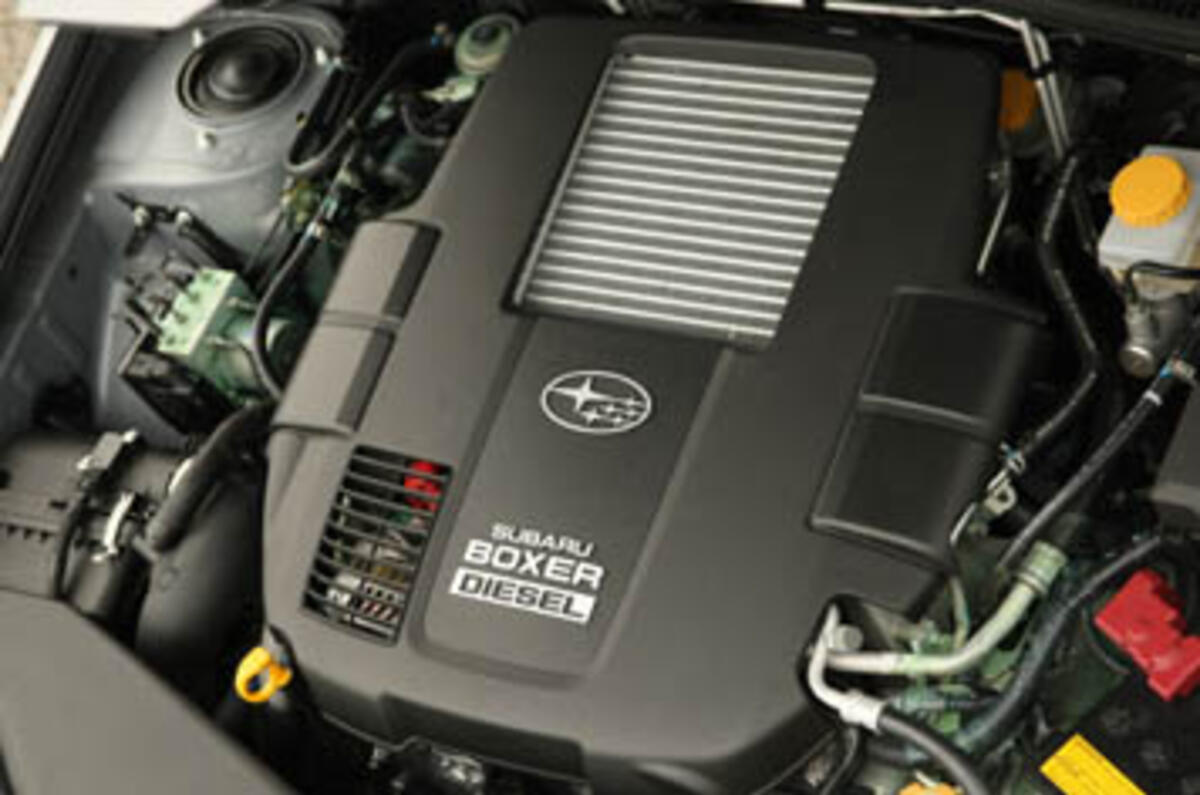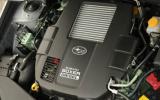What is it?
It’s what would be called sheer bloody-mindedness if it happened in Britain. Subaru only sells 600,000 cars a year; half in Japan, most of the rest in countries where you’d barely measure the interest in a small diesel engine with a micrometer.
Yet Subaru has just developed, on its own and purely because its European retailers asked it to, the first boxer diesel ever fitted to a car. Subaru might only end up making 30,000 units a year, in most countries the engine won’t be sold at all and its design is so restrictive that no other manufacturer will buy it.
Obstinacy? Not a bit of it, says Subaru, whose argument is this: our petrol engines are boxers because they’re light, compact, smooth and mate easily to a 4WD transmission if aligned just-so. So our diesels must be the same. Consider it, then, dedication to engineering rightness.
‘It’s Here’, is Subaru’s strapline. “Who cares?” will be the answer across 85 per cent of the planet. But here it is: the new Legacy 2.0 diesel.
What’s it like?
Worth the development money. Every bit as compact as Subaru’s petrol units, the new engine’s a horizontally opposed 2.0-litre, with equal bore and stroke and a very short crankshaft to limit vibration and noise.
It has alloy blocks/heads and a turbo tucked neatly near the exhaust valves. It looks – is – small; shorter even than the 2.0-litre petrol, with which it shares the same service intervals and, amazingly, weight.
It’s stronger than the petrol unit too. How come? “Honda’s (once-benchmark i-TDCi) diesel? Developed by petrol engineers,” says Toshio Masuda, engineering big-cheese of the Legacy. “Our diesel? Developed by petrol engineers.” And it shows.
It’s no less impressive when energised. This must be the quietest four-cylinder diesel family car around. Unlike most four-cylinder engines it doesn’t have balance shafts, so has less inertia and a better throttle response too. Around town you’re merely aware you’re in a diesel; never surprised by the noise, nor by a reluctance to rev.
At higher speeds it’s better still. At 148bhp the Legacy diesel is among the faster cars in this class and the power band is good. It could use, but doesn’t desperately need, the six-ratio gearbox the Forester and Impreza will have when they get this engine.
There’s respectable pull from a touch below 2000rpm (peak torque’s at 1800) and it revs freely, not noisily past peak power at 3600 before crying off at 4500. Those figures are relatively low – it has been tuned for (class leading) targets of economy and emissions, not power. The wick could be turned up easily and, later, it will be.
The rest of the Legacy wagon’s package is as-you-were. Averagely spacious, above-average-feeling interior. Dynamically, the only change is the fitment of electric, rather than hydraulic power steering - there isn’t much difference in feel and it’s still a very decent car to drive.
All of the engine and drivetrain’s mechanicals are within the wheelbase, so for a large estate the Legacy is an extremely agile one. It grips strongly, has exceptional traction, brakes well and doesn’t even mind being adjusted on the throttle. The ride’s good too and much the same is true of the Outback, only with taller suspension and a greater propensity to lean. A saloon isn’t available for now because of supply limitations and those, in truth, are the only real drawback. Some engine, this.






















Join the debate
Add your comment
Re: Subaru Legacy 2.0D
People, Autocar rated the new Legacy 2 1/2 stars in the road test. It can't be that good
Re: Subaru Legacy 2.0D
Previous cars include Suzuki LJ50, Citroen Visa, Lancia Ypsilon 10, toyota Starlet, Fiat 126, Seat Ibiza GTi . Present cars are Suzuki Alto, Mazda MX5 1.8.
How exactly does any of your current or previous cars listed above give any credibility to your assessment of Subaru? Your brave though for admitting to owning any of them.
Re: Subaru Legacy 2.0D
Repulsive thing as always with Subaru.